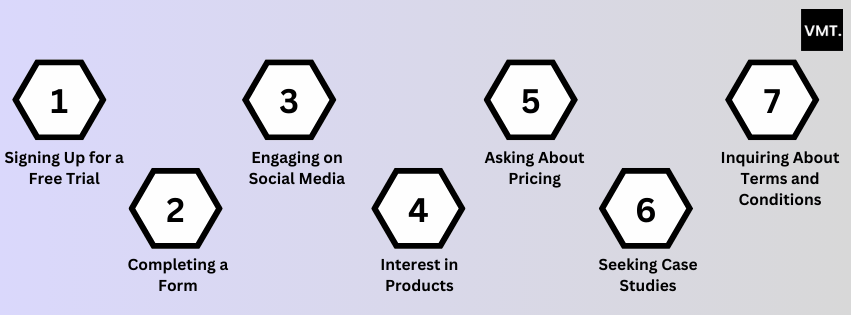What Are Buying Signals and Why They Matter in Digital Marketing?
With around 2.64 billion people shopping online, the digital marketplace is highly competitive. For businesses, this means both great opportunities and tough competition. To stand out, it’s crucial to recognize and respond to buying signals, clues that show when a customer is ready to buy.
Here’s a simple guide to understanding and using buying signals effectively:
What Are Buying Signals?
Buying signals are actions that suggest a potential customer is interested in making a purchase. These signals help businesses identify promising leads, save time, and improve conversion rates. They reflect customer intentions and can be used to tailor your approach to individual needs.

Why Timing Matters: Knowing when a customer is ready to buy lets you act quickly. Misinterpreting or delaying your response can mean losing a sale.
Examples of Buying Signals
- Signing Up for a Free Trial: If someone signs up for a free trial, they’re interested in your product. Even if they don’t start using it right away, they might just need some guidance. Send helpful emails with tips and tutorials to keep them engaged.
- Completing a Form: When a prospect fills out a contact form or subscribes to your newsletter, it shows they’re beginning to trust your brand. Respond promptly and offer valuable information to build this trust further.
- Engaging on Social Media: Users who follow your social media profiles and interact with your content are potential customers. Track their comments, shares, and mentions to identify engaged prospects and focus on them.
- Interest in Specific Products: Frequent visits to a product page or inquiries about a product suggest growing interest. Monitor metrics like page views and average time on page to gauge interest levels.
- Asking About Pricing and Payment Options: Questions about pricing and payment show a readiness to buy. Highlight the unique value of your product and offer various payment methods to make purchasing easier.
- Seeking Case Studies: Prospects who look at case studies or customer success stories are doing their research. Display these prominently on your site to build credibility and provide valuable information.
- Inquiring About Terms and Conditions: Questions about contract details usually mean a prospect is close to making a decision. Focus on building trust and providing clear information to help finalize the sale.

Using Buying Signals to Boost Sales
To make the most of buying signals, follow these steps:
- Train Your Sales Team: Make sure your sales team understands how to recognize and act on buying signals effectively.
- Track Behavioral Data: Use tools to monitor user behavior on your site, like heatmaps, to understand what interests customers and where they may be dropping off.
- Segment Your Audience: Group customers based on their behavior and interests to tailor your marketing efforts and improve engagement.
- Send Personalized Emails: Use the information from buying signals to create personalized email campaigns that address specific interests and needs.
- Launch Retargeting Ads: Re-engage visitors who have shown interest in your products but haven’t yet purchased with targeted ads.
- Share Case Studies on Social Media: Increase visibility and build trust by sharing case studies and tagging customers on social media.
By understanding and responding to buying signals, you can improve your marketing strategies and convert more prospects into loyal customers.
Understanding and responding to buying signals can transform your marketing strategies. Viral Marketing Trends is here to help you make the most of these insights, turning prospects into loyal customers. Contact us today to boost your sales with smart, responsive digital marketing!
